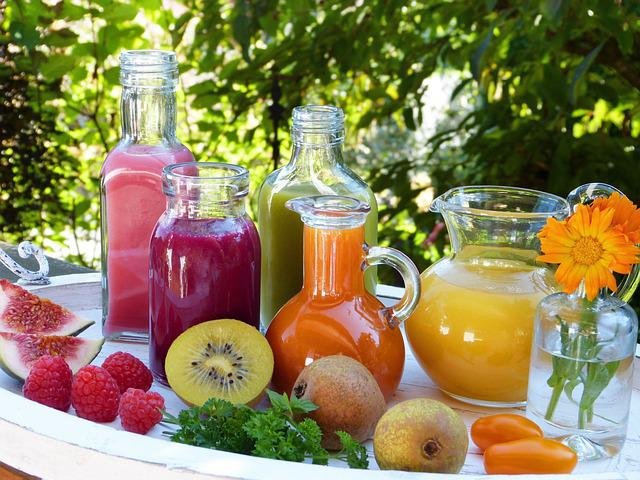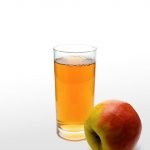
Juices and smoothies are two tasty ways to increase your daily fruit and vegetable intake. But what are the nutritional differences between what is produced with a juice extractor compared to a centrifuge? And how to reuse the scraps? Here is a lot of information that will be useful to you.
It is now well known the importance of taking 5 portions of fruit and vegetables every day to provide our body with a good dose of vitamins and minerals useful for its functions. However, it is not easy for everyone to achieve this goal: partly due to lack of time in cleaning and preparing vegetables, partly because these foods are not always appreciated and easy to take during the day. One way to increase your intake of fresh, vital and very beneficial foods is to prepare homemade or centrifuged juices.
The juices, or fruit and vegetable extracts, are obtained using a state-of-the-art appliance (which appeared on the market a few years ago) called an extractor, an innovative product that allows you to maintain the major properties of vegetables and fruit unaltered.
Alternatively, there are centrifuged, instead made with the more traditional centrifuges that use high speeds and slightly overheat the fruit or vegetables you choose to make the drinks. Let’s now discover the main characteristics and nutritional differences of these two types of do-it-yourself juices.
Nutritional properties of the extracts
The extractor is a household appliance that allows you to obtain fruit juice but also vegetables (including green leafy ones) while maintaining the vitamins and mineral salts contained in these foods. What is obtained, therefore, is a live juice, rich in enzymes, in which the only defined part of waste is represented by the fibers (among other things in much smaller quantities than those of the centrifuge). The extractor is able to provide these performances as it manages to obtain the juice by working at lower speeds, “cold”, ie not raising the temperature, which the centrifuge does.
Depending on the combination of juice we intend to prepare, we can add carrots, apples, pears, oranges but also spinach, cabbage, cucumbers, ginger or aromatic herbs such as parsley or basil. Based on the extract chosen, we could benefit from the purifying, diuretic, digestive, energy qualities of each individual vegetable or fruit with which we wanted to make the juice, with the advantage that we can vary every day ensuring so many useful nutrients for our body.
The extracts can be enjoyed for breakfast or as a mid-morning or mid-afternoon snack and customized according to your tastes and needs. They are also suitable for children, elderly people and those who tolerate fiber poorly, attention only to those who must keep sugars under control.
Nutritional properties of centrifuged
Juices are now considered by most drinks to be “old generation” as they are overtaken by modern technology of extractors that ensure greater nutritional properties to the juice you are about to drink. Obviously, if you have a centrifuge at home and there is no possibility of replacing it with an extractor (appliance still quite expensive especially if of excellent quality) you can continue to use it while still taking advantage of its benefits, albeit minor.
Precisely due to the fact that the centrifuge works at high revolutions, by overheating the fruit and vegetables a little, a decrease in the nutritional properties of the centrifuged products obtained is produced. Very labile and heat sensitive vitamins such as vitamin C are partly lost with this process of extracting the juice of vegetables and fruit as well as the enzymes present in these foods. However, these are not drinks to be demonized but on the contrary they are still useful to increase the intake of fresh, raw and seasonal foods.
Nutritional differences between extracts and centrifuged
As you will have understood, the juices obtained from an extractor are drinks with decidedly better nutritional properties and now recommended by all experts as they are richer in water, vitamins, mineral salts and enzymes. Among other things, the extractor is able to better optimize the squeezing of fruit and vegetables, guaranteeing a higher yield in terms of juice and less waste.
Juices, as well as centrifuges, should be prepared on the spot and drunk immediately to fully enjoy all the benefits (prolonged contact with air, light and heat could in fact make them lose some of their properties). Given the absence of fiber, even those with digestive problems can safely take these drinks that are easily assimilated by our body. Furthermore, drinking the extracts regularly allows for a good purification and detoxification of the body.
The centrifuged ones do a little the same thing as the extracts but in a less incisive way precisely because the high speed and the overheating with which they are obtained limit their beneficial potential a little.
How to reuse waste: ideas and practical advice
Both the extracts and the centrifuges produce waste, consisting of the fibrous part of fruit and vegetables. Don’t throw them away! These fiber-rich products can in fact be recovered to make biscuits, cakes or other sweet and savory recipes.
If the scraps are produced only from fruit, they lend themselves well to making biscuits simply by combining them with a classic recipe you have already tried. The addition will in fact make them tastier and give new consistency to your usual cookies. Even cakes and plumcakes can be enriched with the sweet fibers of fruit or vegetables such as carrots that are often used in desserts, but in this case it is better to blend them together with the rest of the ingredients.
If you prefer to try a savory recipe, perhaps because your scraps are largely derived from vegetables (cabbage, spinach, etc.), you can combine them with other fresh vegetables to make a flan or a rustic pie. Another possibility is to blend the vegetable scraps with a little oil to make a sauce to be used on bread, croutons or to accompany a second dish, or even blend them with vegetable broth or potatoes or pumpkin already cooked. to make a velvety cream.






